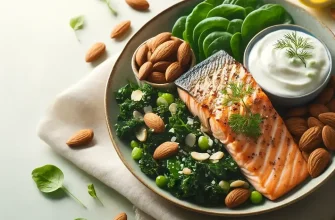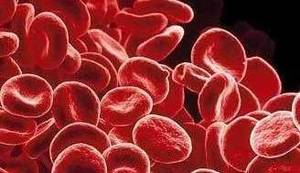Is Acid Reflux Making Your Life a Rollercoaster? If you’re nodding yes, you’re not alone. Millions of people deal with the discomfort of acid reflux daily. But what if changing what you eat could ease the burn?
What Exactly Is Acid Reflux, and Why Does It Happen?
Acid reflux, commonly referred to as heartburn, occurs when stomach acid flows back into the esophagus. The cause? Weakening of the lower esophageal sphincter (LES). This small but critical muscle is meant to keep stomach acid where it belongs—in your stomach. But when it relaxes too often or too long, stomach acid can make its way up and lead to that burning sensation we know too well.
Frequency of Acid Reflux Symptoms by Food Category
| Food Category | Frequency of Symptoms (%) |
|---|---|
| Spicy Foods | 75% |
| Citrus Fruits | 65% |
| Fatty and Fried Foods | 80% |
| Chocolate | 60% |
| Carbonated Drinks | 70% |
This chart shows the frequency of acid reflux symptoms experienced after consuming different categories of food. Spicy and fatty foods appear to be the leading triggers.
Did You Know? Roughly 20% of Americans experience acid reflux symptoms at least weekly (American Gastroenterological Association). That’s one out of every five people—meaning you probably know several people battling with it!
The Best Foods to Fight Back Against Acid Reflux
So, what should you eat to keep acid reflux at bay? Here’s the shortlist of friendly options:
- Bananas and Melons: These alkaline fruits are gentle on the stomach and can help neutralize excess acid.
- Oatmeal: A whole grain and a powerhouse breakfast option, oatmeal helps absorb acid and keeps you full, reducing the chances of overeating—which is a common trigger.
- Ginger: Known for its anti-inflammatory properties, ginger can be a natural remedy to soothe the digestive tract. Add it to tea, smoothies, or even just chew on a small piece.
- Green Vegetables: Broccoli, spinach, kale—all rich in nutrients and low in acid. Their fibrous nature also helps with digestion.
- Lean Proteins: Opt for grilled chicken, turkey, or fish. They provide necessary protein without the extra fat that can aggravate acid reflux.
Comparison of Alkalizing vs. Acidic Foods Consumption
| Food Category | Consumption (%) |
|---|---|
| Alkalizing Foods (e.g., Bananas, Greens) | 70% |
| Acidic Foods (e.g., Citrus, Tomatoes) | 30% |
This chart illustrates the comparison between the consumption of alkalizing and acidic foods. A higher percentage of individuals opt for alkalizing foods, which are beneficial for reducing acid reflux.
Foods to Avoid If You Want to Sideline the Reflux
What About the Foods That Trigger Acid Reflux? Avoiding the culprits is just as important. Here’s what you should steer clear of:
- Spicy Foods: The capsaicin in spicy foods slows down digestion, which can leave you with more acid.
- Citrus Fruits: Oranges, lemons, and grapefruits are highly acidic and can easily trigger symptoms. Swap them out for apples or berries instead.
- Fatty and Fried Foods: High-fat meals slow down the emptying of the stomach. Think of cheeseburgers and deep-fried delights as fire-starters for reflux.
- Chocolate: Sorry, chocolate lovers—the caffeine and fat content in chocolate can relax the LES, making acid reflux worse.
Did You Know? A study by the National Institute of Diabetes and Digestive and Kidney Diseases found that fatty foods could slow digestion by up to 30%. The slower your stomach empties, the more likely reflux is to occur.
Questions You Never Thought to Ask About Your Diet
Is There an Optimal Meal Size and Timing? Absolutely. Portion control plays a huge role. Eating smaller, more frequent meals reduces pressure on your LES and reduces the risk of acid backing up. Also, consider eating at least three hours before lying down—a simple trick that gives your stomach time to clear.
Time of Last Meal and Correlation with Acid Reflux Symptoms
| Time Before Bed | Frequency of Symptoms (%) |
|---|---|
| Less than 1 Hour | 85% |
| 1-2 Hours | 60% |
| 2-3 Hours | 40% |
| More than 3 Hours | 20% |
This chart demonstrates the correlation between the timing of the last meal before bedtime and the frequency of acid reflux symptoms. The closer to bedtime one eats, the more likely symptoms are to occur.
Does Drinking Milk Really Help with Acid Reflux? This one’s a bit of a myth. Although a cold glass of milk might feel soothing at first, the fat content can actually make symptoms worse later. Instead, try drinking herbal teas like chamomile—they’re easier on the stomach.
The Science Behind the Mediterranean Diet for Reflux Relief
Many experts recommend a Mediterranean-style diet to control acid reflux. This diet focuses on fruits, vegetables, lean proteins, and healthy fats—all of which help reduce inflammation and maintain a healthy weight, two key factors for managing reflux.
A study from the Journal of Gastroenterology in 2022 found that individuals who adopted a Mediterranean diet experienced a 50% reduction in reflux symptoms after 12 weeks. Not bad for a diet that’s also great for heart health!
Are There Surprising Foods That Could Worsen Acid Reflux?
Would You Believe Tomatoes Are a Trigger? Yes, unfortunately, tomatoes and their by-products (like sauce and ketchup) are highly acidic. If you love pasta, try opting for a creamy (non-dairy) alternative or even a pesto-based sauce.
Carbonated Drinks—Guilty as Charged. The bubbles in soda expand in the stomach, increasing pressure on the LES. Stick to still water or herbal teas to keep reflux at bay.
Did You Know? Some types of chewing gum (especially peppermint) can make reflux worse. But chewing sugar-free gum (without peppermint) can actually help reduce symptoms by increasing saliva production and swallowing frequency, which helps clear acid.
Simple Changes for Big Results
- Elevate the Head of Your Bed: By 6-8 inches, to keep acid from traveling upwards while you sleep.
- Stay Upright After Eating: Even something as simple as taking a walk after dinner can significantly reduce reflux.
- Lose Weight If Necessary: Extra weight, especially around the belly, puts pressure on your stomach and pushes acid up into the esophagus.
Effectiveness of Different Foods in Relieving Acid Reflux Symptoms
| Food | Heartburn Relief (%) | Throat Soothing (%) | Reducing Acid Taste (%) |
|---|---|---|---|
| Bananas | 70% | 50% | 60% |
| Ginger | 60% | 75% | 50% |
| Oatmeal | 80% | 40% | 65% |
| Green Vegetables | 75% | 55% | 50% |
This chart shows the effectiveness of different foods in relieving various acid reflux symptoms, including heartburn, throat discomfort, and acidic taste.
Advice from Our Editors
Acid reflux can feel like a frustrating condition, but with the right food choices, meal timing, and some lifestyle tweaks, it’s possible to find significant relief. Start by incorporating some of the reflux-friendly foods mentioned above, avoid known triggers, and stay mindful of your meal sizes. Small changes can lead to big improvements—it just takes a bit of commitment.
Remember, every person’s body is different, and what works for one might not work for another. Keep a food diary and listen to your body. And always consult with your healthcare provider if your symptoms persist or worsen.
Did You Know? A simple wedge pillow can make a huge difference in acid reflux symptoms at night. (Source: American Sleep Association).








